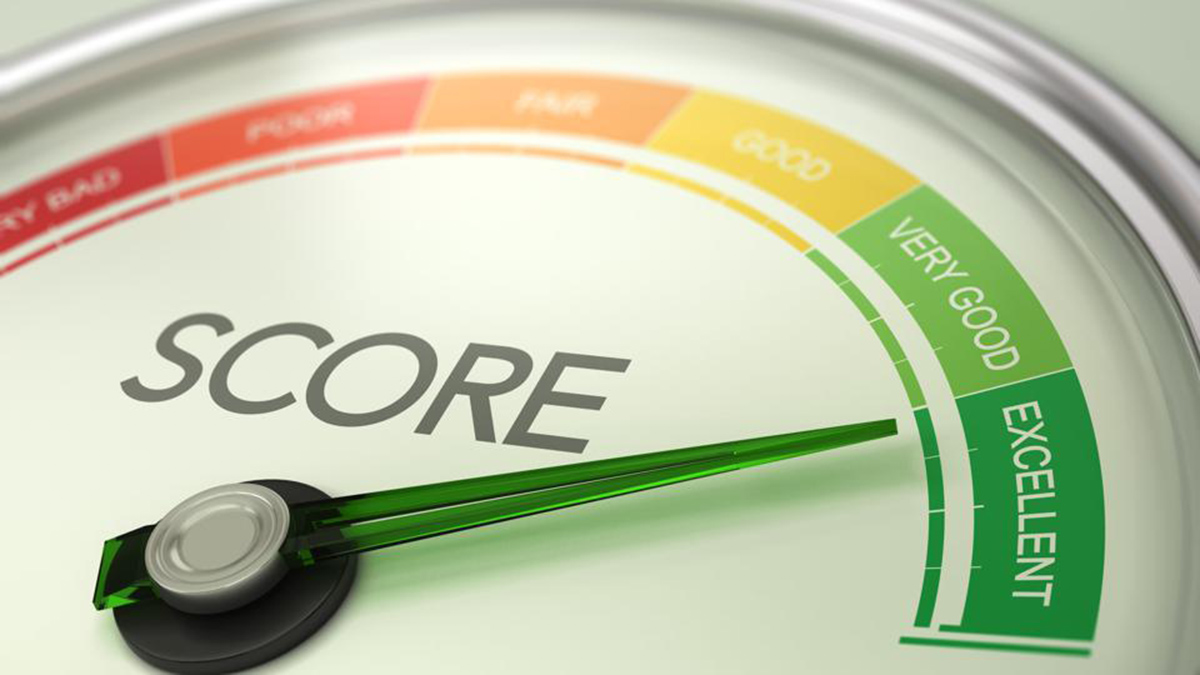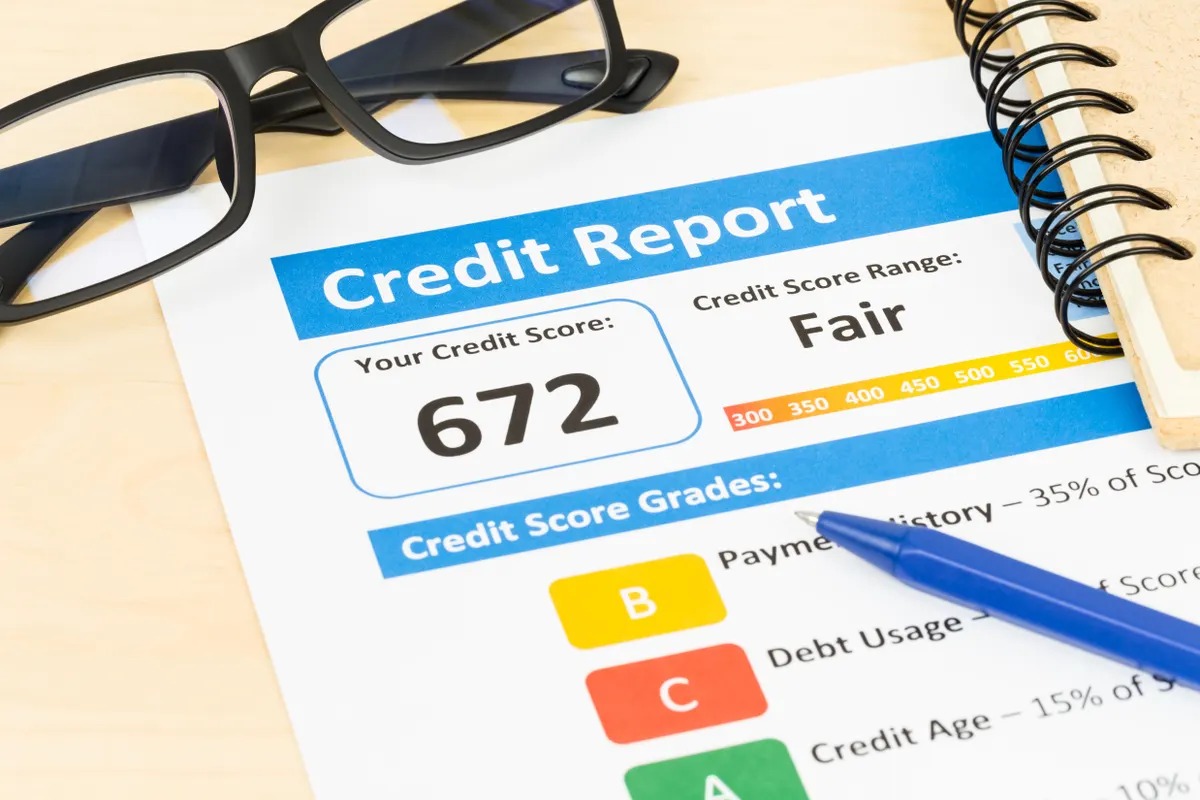

Finance
What Does Credit Limit For Cash Mean
Published: March 5, 2024
Learn about the significance of credit limit for cash and its impact on your finances. Understand how it affects your financial management. Gain insights now!
(Many of the links in this article redirect to a specific reviewed product. Your purchase of these products through affiliate links helps to generate commission for LiveWell, at no extra cost. Learn more)
Table of Contents
Introduction
Understanding the nuances of credit limits is crucial for responsible financial management. While most individuals are familiar with the concept of a credit limit for purchases, the credit limit for cash often remains a mystery. In this article, we will delve into the intricacies of credit limits, with a specific focus on credit limits for cash advances. By the end, you will have a comprehensive understanding of how credit limits for cash work, the factors that influence them, and how to manage them effectively.
The credit limit on a credit card represents the maximum amount of money that the cardholder can borrow. This limit is set by the credit card issuer and is based on various factors, including the cardholder's credit history, income, and overall creditworthiness. While the primary purpose of a credit card is to make purchases, many credit cards also allow cardholders to obtain cash advances up to a certain limit. This is where the concept of a credit limit for cash comes into play.
Understanding the distinction between the credit limit for purchases and the credit limit for cash advances is essential. While the former dictates the maximum amount that can be spent on purchases using the credit card, the latter determines the maximum amount that can be withdrawn as cash from an ATM or through other cash advance methods. It's important to note that the credit limit for cash is often lower than the overall credit limit for purchases, and cash advances typically come with additional fees and higher interest rates.
As we explore the intricacies of credit limits for cash, it's important to recognize the impact that these limits can have on an individual's financial well-being. By gaining a deeper understanding of how credit limits for cash work and the factors that influence them, individuals can make informed decisions about their credit card usage and avoid potential pitfalls associated with exceeding these limits. Let's embark on this journey to unravel the nuances of credit limits for cash and empower ourselves with the knowledge needed to navigate the world of personal finance more effectively.
Understanding Credit Limits
Credit limits serve as a crucial component of responsible credit card usage, shaping the boundaries within which cardholders can make purchases and obtain cash advances. These limits are established by credit card issuers and are influenced by a range of factors, including the cardholder’s credit history, income, and overall creditworthiness.
When it comes to credit cards, the credit limit represents the maximum amount of money that a cardholder can borrow. This limit is primarily intended for making purchases, whether in-store, online, or via other payment methods. However, credit cards also offer the option of obtaining cash advances, subject to a separate credit limit specifically designated for these transactions.
It’s important to recognize that the credit limit for purchases and the credit limit for cash advances are distinct entities. While the former dictates the maximum amount that can be spent on purchases using the credit card, the latter determines the maximum amount that can be withdrawn as cash. Typically, the credit limit for cash advances is lower than the overall credit limit for purchases, reflecting the higher risk associated with cash transactions and the potential for increased financial strain on the cardholder.
Understanding credit limits involves acknowledging the impact they have on a cardholder’s financial behavior. Exceeding the credit limit for purchases or cash advances can lead to financial penalties, increased interest rates, and potential damage to one’s credit score. Therefore, it’s essential for cardholders to be mindful of their credit limits and manage their spending within these boundaries.
Moreover, credit limits are not static and can be subject to change based on the cardholder’s financial circumstances, credit utilization, and payment history. Responsible credit usage, timely payments, and prudent financial management can contribute to potential increases in credit limits over time, providing cardholders with greater financial flexibility within the bounds of responsible borrowing.
By understanding the significance of credit limits and the distinctions between credit limits for purchases and cash advances, individuals can navigate the realm of credit card usage more effectively. In the subsequent sections, we will delve deeper into the specifics of credit limits for cash advances, shedding light on how they operate and the factors that influence them.
Credit Limit for Cash Advances
When exploring the realm of credit card usage, it’s essential to understand the concept of the credit limit for cash advances. This specific limit dictates the maximum amount of cash that a cardholder can withdraw from an ATM or obtain through other cash advance methods using their credit card. While the overall credit limit encompasses both purchases and cash advances, the credit limit for cash advances represents a distinct boundary within which cardholders can access cash funds.
Credit limits for cash advances are often lower than the overall credit limit for purchases, reflecting the higher risk and potential financial strain associated with cash transactions. Additionally, cash advances typically incur additional fees and higher interest rates compared to standard purchases, making it imperative for cardholders to exercise caution when utilizing this feature of their credit card.
It’s important to note that the credit limit for cash advances is not a standalone limit but rather a subset of the total credit limit on the card. As such, any cash advances obtained contribute to the overall credit utilization, which can impact the cardholder’s credit score and financial standing. Exceeding the credit limit for cash advances can result in financial penalties and increased interest rates, underscoring the significance of managing cash advance transactions within the prescribed limit.
Furthermore, the credit limit for cash advances is influenced by various factors, including the cardholder’s credit history, income, and overall creditworthiness. Card issuers assess these factors to determine the appropriate credit limit for cash advances, aiming to mitigate the potential risks associated with cash transactions and ensure responsible borrowing practices.
Understanding the nuances of the credit limit for cash advances empowers cardholders to make informed decisions regarding their financial management. By recognizing the limitations and potential implications of cash advance transactions, individuals can exercise prudence in utilizing this feature of their credit card, thereby safeguarding their financial well-being and credit standing.
In the subsequent sections, we will delve into the operational aspects of credit limits for cash advances, elucidating how they function and the factors that influence their determination. This deeper understanding will equip individuals with the knowledge needed to navigate the realm of credit limits for cash advances more effectively and responsibly.
How Credit Limit for Cash Works
The credit limit for cash advances governs the maximum amount of cash that a cardholder can access through their credit card. This limit is a subset of the overall credit limit on the card and is specifically earmarked for cash advance transactions, such as ATM withdrawals or other methods of obtaining cash using the credit card.
When a cardholder seeks to utilize the credit limit for cash advances, they can do so by initiating a cash withdrawal from an ATM using their credit card. Alternatively, some credit card issuers may offer the option to obtain cash advances through designated financial institutions or by using convenience checks provided by the card issuer. Regardless of the method employed, the amount of cash that can be accessed is constrained by the credit limit for cash advances.
It’s essential for cardholders to be mindful of the credit limit for cash advances, as exceeding this limit can result in financial penalties, increased interest rates, and potential damage to their credit standing. Additionally, cash advances often incur upfront fees and higher interest rates compared to standard purchases, making it crucial for cardholders to assess the financial implications and exercise prudence when considering cash advance transactions.
Furthermore, the credit limit for cash advances is a dynamic aspect of a cardholder’s overall credit limit, subject to potential changes based on the individual’s financial circumstances, credit utilization, and payment history. Responsible credit usage and prudent financial management can contribute to potential increases in the credit limit for cash advances, providing cardholders with greater flexibility within this specific subset of their credit limit.
Understanding how the credit limit for cash advances operates enables cardholders to make informed decisions about utilizing this feature of their credit card. By recognizing the constraints, potential fees, and implications associated with cash advance transactions, individuals can navigate this aspect of credit card usage more effectively, safeguarding their financial well-being and credit standing.
In the subsequent sections, we will delve into the factors that influence the determination of the credit limit for cash advances, shedding light on the considerations that card issuers take into account when setting these limits. This deeper insight will empower individuals to manage their credit limit for cash advances more prudently and responsibly, enhancing their overall financial literacy and decision-making capabilities.
Factors Affecting Credit Limit for Cash
The determination of the credit limit for cash advances is influenced by a variety of factors that collectively shape a cardholder’s financial profile and creditworthiness. Understanding these factors is essential for individuals seeking to comprehend the dynamics behind the establishment and potential adjustment of their credit limit for cash advances.
Credit History: One of the primary factors that significantly impacts the credit limit for cash advances is the cardholder’s credit history. Credit card issuers assess an individual’s credit history to gauge their track record of managing credit and debt obligations. A positive credit history, characterized by timely payments and responsible credit utilization, can contribute to a higher credit limit for cash advances, reflecting the cardholder’s demonstrated ability to manage credit responsibly.
Income: The cardholder’s income plays a pivotal role in determining the credit limit for cash advances. A higher income level generally indicates greater financial capacity to manage credit obligations, potentially leading to a higher credit limit for cash advances. Card issuers evaluate the stability and adequacy of an individual’s income to assess their ability to repay cash advances within the prescribed limits.
Credit Utilization: The utilization of existing credit lines, including the utilization of the overall credit limit and the credit limit for cash advances, influences the determination of these limits. Responsible credit utilization, wherein cardholders maintain a reasonable balance relative to their credit limits, can positively impact the credit limit for cash advances. Conversely, high levels of credit utilization may prompt card issuers to maintain or lower the credit limit for cash advances to mitigate the perceived risk associated with extended credit usage.
Payment History: The cardholder’s payment history, encompassing the consistency and timeliness of credit card payments, is a critical factor in assessing creditworthiness. A history of punctual payments reflects positively on the individual’s credit profile and may contribute to potential increases in the credit limit for cash advances. Conversely, late payments or delinquencies can undermine the cardholder’s credit standing and potentially lead to a reduction in the credit limit for cash advances.
Overall Creditworthiness: The comprehensive evaluation of a cardholder’s overall creditworthiness, encompassing factors such as credit history, income, and debt obligations, influences the determination of the credit limit for cash advances. Card issuers assess these multifaceted aspects to gauge the individual’s financial responsibility and capacity to manage credit effectively, thereby shaping the credit limits assigned to the cardholder.
By comprehending the multifaceted factors that influence the determination of the credit limit for cash advances, individuals can gain insight into the considerations that underpin these limits. This understanding empowers cardholders to manage their financial profile proactively, fostering responsible credit usage and potentially positioning themselves for increases in their credit limit for cash advances over time.
Managing Your Credit Limit for Cash
Effectively managing the credit limit for cash advances is integral to maintaining financial stability and responsible credit card usage. By implementing prudent strategies and exercising vigilance, cardholders can navigate the realm of cash advances while safeguarding their financial well-being and credit standing.
Monitoring Credit Utilization: Keeping a close eye on credit utilization, including the utilization of the credit limit for cash advances, is paramount. By maintaining a reasonable balance relative to the credit limit for cash advances, individuals can demonstrate responsible credit management, potentially positioning themselves for increases in their credit limit over time.
Prudent Cash Advance Usage: When considering cash advances, it’s essential to exercise prudence and discernment. Cash advances often incur additional fees and higher interest rates compared to standard purchases, making it crucial for cardholders to evaluate the necessity and financial implications of such transactions. Limiting cash advance usage to essential and unavoidable situations can help mitigate the associated costs and potential impact on the credit limit for cash advances.
Timely Payments: Consistently making timely payments on credit card balances is instrumental in managing the credit limit for cash advances. Punctual payments not only reflect positively on the cardholder’s credit standing but also contribute to potential increases in the credit limit for cash advances over time. Conversely, late payments or delinquencies can undermine the cardholder’s creditworthiness and potentially lead to adverse adjustments in the credit limit for cash advances.
Financial Prudence: Adopting a mindset of financial prudence and mindfulness is crucial when managing the credit limit for cash advances. By evaluating the necessity and potential consequences of cash advance transactions, individuals can make informed decisions that align with their overall financial well-being. Practicing restraint and discernment in utilizing the credit limit for cash advances can contribute to a more secure and sustainable financial outlook.
Communication with Card Issuer: Maintaining open communication with the card issuer can be beneficial, especially when seeking potential adjustments to the credit limit for cash advances. Cardholders can inquire about the factors that influence credit limit determinations and explore the possibility of increasing their credit limit based on improved financial circumstances and responsible credit management practices.
By implementing these strategies and maintaining a proactive approach to managing the credit limit for cash advances, individuals can navigate the realm of cash advance transactions more effectively and responsibly. This proactive stance not only fosters financial stability and prudent credit usage but also positions cardholders for potential increases in their credit limit for cash advances over time.
Conclusion
Understanding the intricacies of credit limits for cash advances is paramount for individuals navigating the realm of credit card usage. The distinction between the credit limit for purchases and the credit limit for cash advances underscores the importance of managing these limits effectively to maintain financial stability and responsible credit practices.
By comprehending the operational dynamics of the credit limit for cash advances and the factors that influence its determination, individuals can make informed decisions about utilizing this feature of their credit card. Monitoring credit utilization, exercising prudence in cash advance usage, and maintaining timely payments are pivotal strategies for managing the credit limit for cash advances effectively.
Furthermore, fostering financial prudence and open communication with the card issuer can contribute to a proactive approach to managing the credit limit for cash advances. By aligning these practices with responsible financial management, individuals can position themselves for potential increases in their credit limit for cash advances over time, thereby enhancing their financial flexibility within the bounds of prudent credit usage.
Ultimately, the management of the credit limit for cash advances is intertwined with broader principles of financial responsibility and mindfulness. By embracing these principles and implementing prudent strategies, individuals can navigate the realm of credit limits for cash advances with confidence, safeguarding their financial well-being and credit standing.
As individuals continue to expand their financial literacy and decision-making capabilities, the knowledge and insights gained from understanding credit limits for cash advances will serve as a cornerstone of responsible credit card usage. By fostering a proactive and informed approach to managing the credit limit for cash advances, individuals can enhance their overall financial well-being and position themselves for sustainable financial success.














